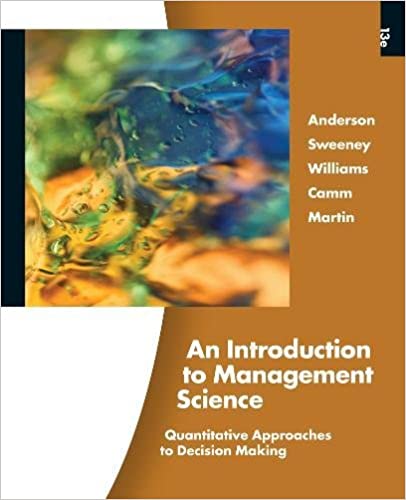
An Introduction to Management Science 13th Edition by David Anderson,Dennis Sweeney ,Thomas Williams ,Jeffrey Camm, Kipp Martin
Edition 13ISBN: 978-1439043271
An Introduction to Management Science 13th Edition by David Anderson,Dennis Sweeney ,Thomas Williams ,Jeffrey Camm, Kipp Martin
Edition 13ISBN: 978-1439043271 Exercise 9
For most products, higher prices result in a decreased demand, whereas lower prices result in an increased demand. Let 
Assume that a firm accepts the following price-demand relationship as being realistic:
where p must be between $20 and $70.
a. How many units can the firm sell at the $20 per-unit price? At the $70 per-unit price?
b. Show the mathematical model for the total revenue (TR), which is the annual demand multiplied by the unit price.
c. Based on other consideration, the firm's management will only consider price alternatives of $30, $40, and $50. Use your model from part (b) to determine the price alternatives that will maximize the total revenue.
d. What are the expected annual demand and the total revenue corresponding to your recommended price?

Assume that a firm accepts the following price-demand relationship as being realistic:

where p must be between $20 and $70.
a. How many units can the firm sell at the $20 per-unit price? At the $70 per-unit price?
b. Show the mathematical model for the total revenue (TR), which is the annual demand multiplied by the unit price.
c. Based on other consideration, the firm's management will only consider price alternatives of $30, $40, and $50. Use your model from part (b) to determine the price alternatives that will maximize the total revenue.
d. What are the expected annual demand and the total revenue corresponding to your recommended price?
Explanation
Demand price relationship:
According to...
An Introduction to Management Science 13th Edition by David Anderson,Dennis Sweeney ,Thomas Williams ,Jeffrey Camm, Kipp Martin
Why don’t you like this exercise?
Other Minimum 8 character and maximum 255 character
Character 255


